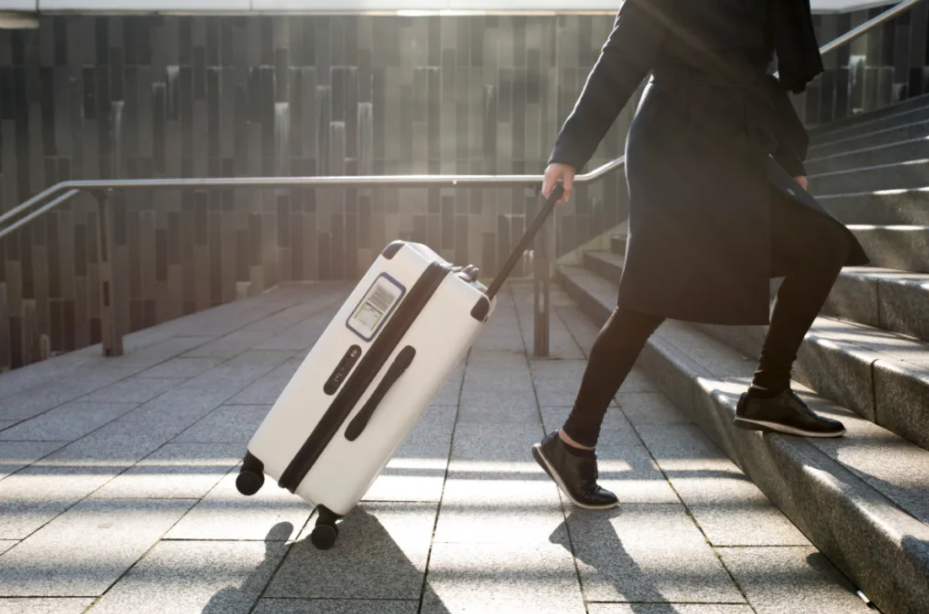Recently we have written quite a bit about BAGTAG and their electronic luggage labels. However, a few questions from readers cropped up regularly, so we arranged an ‘InsideTalk’ with Jasper Quak, Managing Director of BAGTAG, to get answers direct from the top.

What was the idea behind founding BAGTAG?
BAGTAG was founded in 2014 in the Netherlands, with the purpose of introducing the world’s first flexible and secure electronic bag tag solution.
While we saw passengers being able to check in online or even on their mobile phone, travelling with luggage still meant waiting in line at the airport to get a piece of paper attached to your suitcase. We felt it was time to change this and started to work on the BAGTAG solution.
Our goal is to make travellers actually prefer checking in their luggage. Looking back at was has been the most challenging time our industry has seen, I believe we have still made significant progress and are getting more and more traction to achieve this goal.
What do you think is the biggest advantage of using it?
Personally, I would say convenience, as it makes travelling with check-in luggage the easier option. I never have to think about liquids or cramping everything in one small suitcase. I can breeze through the airport with just my essentials and don’t have to worry about overhead bin-space, etc. It’s the comfort of not carrying around a carry-on for me, plus having all the luggage with me that I want on a trip.
From my personal BAGTAG-travelling experience, I’ll never forget the first time I was flying through Zurich Airport, about 6 months after we had launched with the Lufthansa Group. There was a huge line for the standard bag drop, but travelling with my BAGTAG attached to my luggage, I was actually picked out of the line by an agent, who explained to me that because I was flying with a BAGTAG, I was eligible to use their Fast Bag Drop line. Skipping that massive line using our product made me feel very proud and all the more convinced we’re on the right track!
Read more about the benefits here.

How does it work?
Good question!
It’s basically a baggage tag printer and baggage tag, all combined in one rugged device. This means a passenger flying on an airline that’s connected to our services can, whilst checking in for their flight, send all the required baggage information to their BAGTAG from their mobile phone.
The information is then displayed on the device’s e-paper display, which uses pretty much the same display technology you see in e-readers. The big benefit of still displaying all information (rather than using non-visual ways) is that airports throughout the world do not need to change anything to be able to process suitcases tagged with our products. Right now, we’ve proven this at over 350 airport across the world and counting.
Is there a battery in the device that needs to be replaced?
The answer here is no. The original BAGTAG does have a battery, but this will last at least 2,500 cycles. This will last pretty much any passenger a lifetime. If one does run out, I’d love to meet the device’s owner and replace it for free.
Furthermore, we are now in the process of introducing the world’s first battery-less electronic tag. Same concept, but it doesn’t need a battery at all! More to follow on that…
Is there a risk that the device stops working, maybe even during a flight? Could the luggage still be scanned?
It was specifically designed to be a baggage label, so the first requirement for it was to be able to withstand all kinds of rough operating conditions it could be subjected to. Whether that’s extreme temperatures or being thrown around, you can rest assured your device will survive its trip and get your suitcase home safe.
One of the BAGTAG’s properties that makes this possible, is the fact we use e-paper technology. E-paper has the great quality of not requiring any energy to keep displaying its last updated screen. So, even if you would tear the entire device apart and remove its battery, the screen would still show your baggage information.
We’ve actually had an instance where holes were (by mistake!) drilled right through the device in a ‘creative’ attempt to attach it to a suitcase. Obviously you couldn’t update it anymore, but the most recent baggage information was still crystal clear on the display.

We’ve tested all these things extensively during design and production, but also with renowned partners (like leading suitcase manufacturers and baggage handling system providers) to subject it to the most extreme conditions, which it all passed without issues.
Personally though, I feel the fact that it’s now been in use for years already and more and more airlines are adopting our systems says it all.





